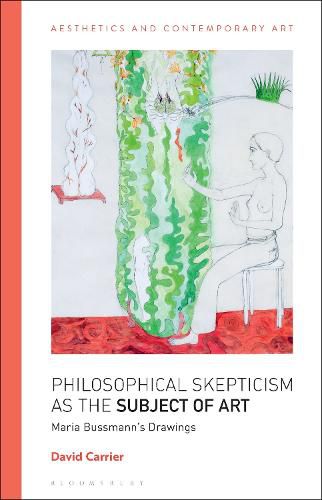Readings Newsletter
Become a Readings Member to make your shopping experience even easier.
Sign in or sign up for free!
You’re not far away from qualifying for FREE standard shipping within Australia
You’ve qualified for FREE standard shipping within Australia
The cart is loading…






The artwork of Maria Bussmann, a trained academic German philosopher and a significant visual artist, provides an ideal test case for a philosophical study of visual art. Bussmann has internalized the relationship between art and philosophy. In this exploration of the history of German aesthetics through Bussmann’s work, David Carrier places the philosophical tradition in the context of contemporary visual culture.
Each chapter focuses on the arguments of a major philosopher whose concerns Bussmann has dealt with as an artist: Kant, Hegel, Merleau-Ponty, Wittgenstein and Arendt. Offering comparative accounts of artists and philosophers whose work is of especial relevance, Carrier shows how Bussmann responds visually to writings of philosophers in art that has an elusive but essential relationship to theorizing. Tackling the question of whether philosophical subjects can be presented visually, Carrier offers a fresh perspective on the German idealist position through the visual art of 21st-century artist steeped in the tradition and continually challenging it through her work.
$9.00 standard shipping within Australia
FREE standard shipping within Australia for orders over $100.00
Express & International shipping calculated at checkout
The artwork of Maria Bussmann, a trained academic German philosopher and a significant visual artist, provides an ideal test case for a philosophical study of visual art. Bussmann has internalized the relationship between art and philosophy. In this exploration of the history of German aesthetics through Bussmann’s work, David Carrier places the philosophical tradition in the context of contemporary visual culture.
Each chapter focuses on the arguments of a major philosopher whose concerns Bussmann has dealt with as an artist: Kant, Hegel, Merleau-Ponty, Wittgenstein and Arendt. Offering comparative accounts of artists and philosophers whose work is of especial relevance, Carrier shows how Bussmann responds visually to writings of philosophers in art that has an elusive but essential relationship to theorizing. Tackling the question of whether philosophical subjects can be presented visually, Carrier offers a fresh perspective on the German idealist position through the visual art of 21st-century artist steeped in the tradition and continually challenging it through her work.